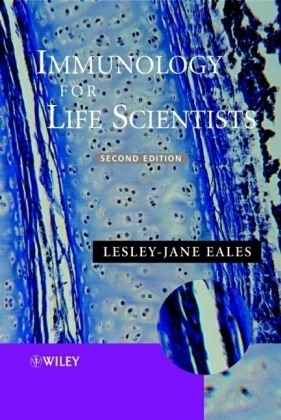Read more
Informationen zum Autor Lesley Eales is a respected educational leader. In 2001, she was awarded a prestigious National Teaching Fellowship in recognition of her outstanding contribution to teaching and learning as well as her involvement in improving the practice of immunology. Klappentext This is the second edition of the popular textbook Immunology for Life Scientists. Thoroughly updated to reflect the changes both within the subject itself as well as in the curriculum, this is the textbook for anyone studying immunology as past of another degree course. No previous instruction in the subject is assumed, rather a broad and basic knowledge is slowly built up and a sound understanding of the fundamentals of the discipline introduced in a step-by-step logical manner. Readers are encouraged to develop their own learning by reading the recommended review articles and attempting the self-assessment available in the book.* clearly written chapters* covers all key aspects of basic immunology* keywords and concepts highlighted and summarised* self-assessment multiple choice questions Zusammenfassung This thoroughly revised and updated new edition provides outstanding coverage of the most important aspects of immunology. Assuming no previous knowledge of the subject, the book gives step--by--step detail on topics such as antigens, hypersensitivity, autoimmunity, reproductive immunity and immunodeficiency. Inhaltsverzeichnis Preface. Preface to the 1st Edition. Glossary. 1 Cells and tissues of the immune system. 1.1 Cells involved in the immune response. 1.1.1 Cellular origins - the pluripotent stem cell. 1.1.2 Cells principally involved in the innate immune response. Polymorphonuclear leukocytes. Neutrophils. Eosinophils. Basophils and mast cells. Megakaryocytes and platelets. 1.1.3 Antigen presenting cells and large granular lymphocytes. Monocytes and macrophages. Dendritic cells. Large granular lymphocytes. 1.1.4 Cells involved in the specific immune response. Lymphocytes. T cells. B cells. Key points for review. 1.2 Lymphoid tissues. 1.2.1 Primary lymphoid tissues. The thymus. Mammalian "bursa equivalents". B cell development in the bone marrow. 1.2.2 Secondary lymphoid tissues. The lymphatic system. Lymph nodes. Spleen. 1.2.3 Tertiary lymphoid tissues. Mucosa-associated lymphoid tissue. Intraepithelial lymphocytes. Key points for review. Bibliography. Now test yourself! 2 Antigens and their receptors. 2.1 Characteristics of antigens and immunogens. 2.1.1 Factors affecting immunogenicity. Foreignness. Size. Chemical complexity. Route of administration. Dose. Host genetic make-up. Approaches used to increase immunogenicity. Key points for review. 2.2 The major histocompatibility factor. 2.2.1 Class I MHC molecules. 2.2.2 Class II MHC molecules. 2.2.3 Non-classical HLA molecules. Key points for review. 2.3 Antigen receptors on cells. 2.3.1 The B cell antigen receptor. Immunoglobulins. Antibody structure. Isotypes. Allotypes. Idiotypes. 2.3.2 Antibody classes. Immunoglobulin G. Immunoglobulin M. Immunoglobulin A. Immunoglobulin D. Immunoglobulin E. 2.3.3 Antibody function. 2.3.4 Fc receptors. 2.3.5 The T cell antigen receptor. g d T cells. The CD3 complex. Function of the TCR-CD3 complex. 2.3.6 The natural killer cell receptor. Key points for review. 2.4 Generation of antigen receptor diversity. 2.4.1 Theories concerning antibody diversity. ...

